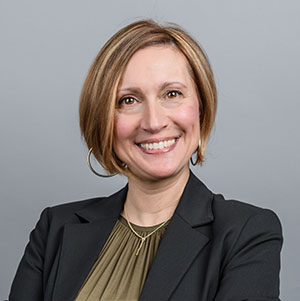Michel Magada, lecturer in Practical Arts at EHL Campus Lausanne, specializes in food science research and development. He explores new cooking technologies and how to teach them. After years of teaching, he put himself in the students' shoes and attended a remote online course on Science & Cooking: From Haute Cuisine to Soft Matter Science (chemistry). Thanks to this experience, he reflects on how the practical arts should be taught in the immediate future.
1. How has digitalization in teaching and learning manifested itself in the Practical Arts?
MM: At EHL, the flipped classroom and blended learning has been around for quite some time in our Practical Arts lessons. For a few years, we have been delivering certain parts of the curriculum via videos on Moodle to different groups and this has always worked well. The videos are no more than 5 minutes long, full of infographics and interesting narration; the students are then tasked to go and produce a similar video of their own to demonstrate what they have understood.
In brief, we have been using digitalized formats to support the learning process, e.g., we encourage students to carry out their work using MOOC material. It is the gateway to self-directed learning and proactive research which is essential to everything we do at EHL.
2. What did you learn by putting yourself in the student’s shoes and attending a fully online culinary course?
MM: By participating as a student in a fully remote haute cuisine course, I became aware of many things, primarily the quantity of information delivered. Much of the course was pre-recorded, so it was handy to be able to press pause and replay. I also became present to the important of good speech: explanations must be clear and well-paced. In a remote lesson which is delivered live, it's vital to stop, pause, make sure the information has been digested before quickly rushing on. Do not deliver too much in one go. Now when it comes to the digitalization of the Preliminaries course, I'm careful how I dose the instructions; I keep them short and essential.
I also learnt about body language during live lessons. There is more learning acquired when the lecturer is not behind the traditional desk, i.e., moving around the class, being more in the students' space. By using videos and the TV screen as the main, central support, the teacher is freer to interact more effectively and create a better rapport with the students.
3. For the Practical Arts, what's the right balance between virtual learning and hands-on experience in the classroom?
MM: I'd say that 40% digital and 60% hands-on is the right balance. As we've seen, the digital aspect is playing an increasingly important role in our program. Our ovens and cooking times are controlled digitally; our main food themes are explained digitally; the students are tested at the end of the course via a digital quiz; virtual reality tours of our kitchens and labs are just around the corner.
However, the "soul" of a recipe can rarely be captured remotely. Despite the valuable food research that can be done online, there are magical processes in bringing a recipe to life that can only be done in presence. When it comes to collaborating with the Nestlé Research & Development lab for example, our students are told to prepare autonomously as much as possible beforehand, but the experimenting of new ideas in finger food or plant-based proteins requires a hands-on approach in order to be truly effective.
4. The future of Practical Arts education?
MM: The impact of digital technologies in the Practical Arts domain has, for me, essentially changed the relationship between lecturer and students. By this, I refer to the fact that I am no longer their only source of information and instruction. The days of the lecturer as demi god are over. This has made our interaction less formal, more direct, more approachable. Students may bring to me new sources of learning, as I to them.
Recipes and attitudes to food have also been impacted. The culinary world is in constant evolution; technology is affecting how we grow, produce and deliver food. From Blockchain transparency to harnessing the principles of Biomimicry, it is our job in the food science research and development sector to be in line with these changes.
I'm a great believer in "Trop c'est ennemi du bien", which roughly translates as "Too much is the enemy of anything good". As stated above, the teaching of the Practical Arts need to harness the best of both the digital and hands-on approaches. If used strategically, the former actually frees up more time for the latter. Education is currently going through a time of great change. Many of today's truths will likely be called into question tomorrow. It's about preparing for those eventualities; knowing what to keep and what to adapt.





